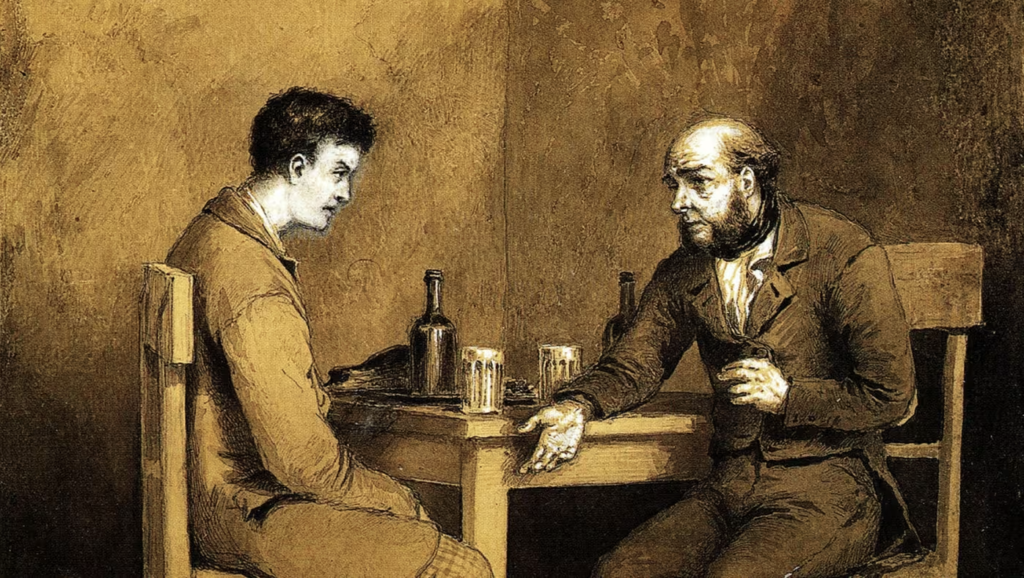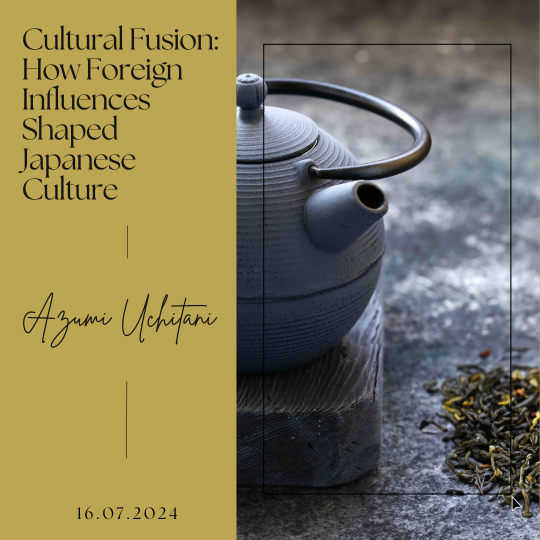The Intricate Dance of Secrets in Literature
written by art historian & curator
For humanity, secrets and confessions emerge as threads, intricately woven into the fabric of culture. Across the vast landscape of artistic expression, one can witness an enduring fascination of people with the hidden and the unspoken. Nowhere is this fascination more palpable than in the realm of literature, where authors wield words as both concealment and revelation. Secrets, both personal and societal, shape narratives, leaving a powerful mark on the collective consciousness.
Videos you may enjoy as well:
Literature, as a mirror reflecting the complexities of the human condition, thrives on the power of secrets. Enigmatic elements such as secrets and confessions serve as literary devices that enrich stories with layers of meaning and delight readers with a journey of discovery. The allure lies not only in the unveiling of hidden truths but in the delicate dance between what is disclosed and what remains shrouded in mystery.
At its core, literature is a testament to the potency of the unspoken word. Authors deftly navigate the terrain of subtext and nuances, creating narratives that resonate beyond the confines of the page. The unspoken can add depth and texture to storytelling. From Jane Austen’s delicately social commentaries in ”Pride and Prejudice” to the haunting ambiguity of Henry James’s ”The Turn of the Screw”, the unspoken word becomes a tool for engaging readers in a literary pas de deux, where interpretation becomes a dance with the elusive.
Beyond mere linguistic devices, literature unfolds secrets through a spectrum of narrative strategies. Metaphors, symbolism, and allegory act as veils, concealing profound truths that wait to be unraveled. In George Orwell’s allegorical masterpiece ”Animal Farm”, the barnyard becomes a microcosm of political upheaval, the animals’ actions concealing a damning commentary on power and corruption. Nathaniel Hawthorne, in ”The Scarlet Letter” uses the embroidered symbol of shame to convey a complex tale of sin, redemption, and societal judgment.
In this exploration of literary secrets, we will journey through the power of confessions, both by characters within the narrative and the authors themselves. Fyodor Dostoevsky’s exploration of guilt and redemption in ”Crime and Punishment” or the touching revelations of Ian McEwan in ”Atonement” are both great examples of confessions that serve as pivotal moments, shaping the evolution of characters. The allure of secrets lies not only in the discovery of the plot and the characters but in the resonance they create with the audience, echoing universally valid truths.
The Power of the Unspoken Word
Jane Austen’s ”Pride and Prejudice” stands as a timeless testament to the art of weaving subtext and hidden meanings into the fabric of a narrative. Published in 1813, this classic novel explores the societal norms, courtship rituals, and the complexities of human relationships in the early 19th-century English gentry.

Austen’s keen observations of the societal conventions of her time are subtly embedded in the characters’ manners and interactions. ”Pride and Prejudice” exposes societal expectations associated with class and marriage. The novel’s opening line, ”It is a truth universally acknowledged, that a single man in possession of a good fortune, must be in want of a wife”, immediately establishes the importance of marriage in society. However, the ironic tone serves as a harbinger of Austen’s social critique. The societal pressure to marry for financial stability is ever-present, and the characters’ conversations are often laden with underlying commentary on the limitations placed on women and the precariousness of social standing. Austen employs irony and satire to convey her social commentary with finesse. The character of Mr. Collins, the obsequious clergyman, is a prime example. His long-winded, pompous speeches and his misguided attempts at flattery serve as a satirical commentary on the superficiality of social niceties. Through this character, Austen ingeniously uses subtext to critique the societal expectations of the time, exposing the absurdities of the marriage market and the constraints placed on individual agency.
The exchanges between the novel’s protagonists, Elizabeth Bennet and Mr. Darcy, is also a prime example of how subtext shapes the narrative. Austen uses the characters’ dialogue not only to propel the plot forward but also to reveal their true feelings indirectly. The infamous dance at the Meryton assembly, the sharp repartees, and the carefully chosen words during their encounters serve as a dance of subtext, allowing readers to discern the burgeoning attraction between the two characters.
Henry James’s gothic novel, ”The Turn of the Screw”, excels in the art of hiding meanings in a haunting narrative. Published in 1898, this psychological ghost story narrates the tale of two orphaned children in a remote English estate. The brilliance of James’s work lies in the enigmatic layers that cloak the storyline, inviting readers to navigate a maze of uncertainty. James crafts a narrative where the line between the supernatural and psychological is blurred, leaving readers to grapple with their interpretations. The governess’s recounting of events, with its intentional omissions and nuances, becomes a vehicle for subtextual exploration. Readers are compelled to decipher the hidden meanings behind the governess’s perceptions and interactions with the spectral figures that haunt the estate. James also subtly infuses the narrative with themes of sexual repression and societal constraints prevalent in Victorian England. The relationship between the governess and her mysterious employer carries an undercurrent of unspoken desires and societal expectations. The subtext here deepens the psychological tension, adding a layer of complexity to the governess’s experiences and interpretations of the supernatural events.
The novel’s narrative structure, with its reliance on a first-person, unreliable narrator, contributes to the subtextual richness. The governess’s perspective becomes a lens through which the reader glimpses the unfolding events, yet her reliability is constantly questioned. ”The Turn of the Screw” breaks through its capacity to provoke thought and elicit diverse interpretations, as readers navigate the shadowy realms between the seen and the unseen.
Symbolism Illuminating Secrets
Metaphors, symbolism, and allegory are multifaceted tools for both concealing and revealing the secrets that permeate the narrative of a novel. Nathaniel Hawthorne’s novel ”The Scarlet Letter” explores the consequences of sin in a Puritanical society through the story of Hester Prynne, a woman branded with a scarlet ”A” for adultery. Throughout the novel, Hawthorne employs metaphors to shroud deeper meanings within the narrative. The scarlet letter itself, a tangible symbol of Hester’s transgression, transforms into a metaphorical veil. The ”A”, once a mark of shame, becomes a symbol of Hester’s strength and resilience, concealing the complexity of her character beneath its scarlet surface. This metaphorical layering invites readers to delve beyond the surface and contemplate the dichotomy between societal judgment and individual growth.
Hawthorne skillfully employs symbolism to stylistically enrich the novel. The scaffold, a recurring symbol, serves as a stage for public shaming and confession. Its dual nature becomes a metaphor for the societal scrutiny that exposes the characters’ secrets. The wild rosebush outside the prison, though initially symbolic of nature’s indifference to human sins, gradually transforms into a metaphor for hope and redemption, revealing the potential for renewal hidden beneath the harsh judgment of society.
”The Scarlet Letter” is an allegory for the broader human condition, where the scarlet letter embodies universal themes of sin, guilt, and redemption. The allegorical dimension induces reflections beneath the narrative, prompting readers to contemplate the broader implications of secrets and societal judgment. Hester Prynne’s journey becomes an allegory for the transformative power of acknowledging and confronting one’s secrets, transcending the confines of societal expectations.
Confessions in Literature
In Fyodor Dostoevsky’s ”Crime and Punishment”, confessions serve as pivotal moments that shape the trajectory of the narrative and the development of the protagonist, Rodion Raskolnikov. The Russian novel explores the psychological torment of a young student who rationalizes murdering for what he believes to be a higher purpose. ”Crime and Punishment” reaches its zenith when Raskolnikov confesses his crime to Sonia Marmeladov, a compassionate young woman. This moment occurs in Sonia’s humble apartment, and the atmosphere is charged with emotional intensity as Raskolnikov, burdened by the weight of his guilt, lays bare his soul. Sonia, embodying forgiveness and empathy, becomes a catalyst for his spiritual transformation.

The confession scene is a climactic turning point in the novel, marking Raskolnikov’s realisation of the moral consequences of his actions. Dostoevsky utilises this confession not only as a narrative device but as a powerful exploration of redemption. Raskolnikov’s admission of guilt to Sonia initiates a profound inner struggle that sets the stage for his ultimate journey toward moral reckoning and spiritual renewal. In ”Crime and Punishment”, confessions serve as portals into the depths of morality, conscience, and the quest for redemption. Dostoevsky’s handling of confessional moments elevates the novel into a profound exploration of the human condition, leaving an indelible mark on literature and providing readers with an introspective narrative.
In the vast landscape of art and culture, secrets and confessions enrich the creative experience and invite people to engage in a more meaningful exploration of the human condition. Expressed through written words, these hidden narratives go beyond aesthetics and unravel mysteries of life, connecting us with the shared confessions that bring all people together.







Leave a Reply